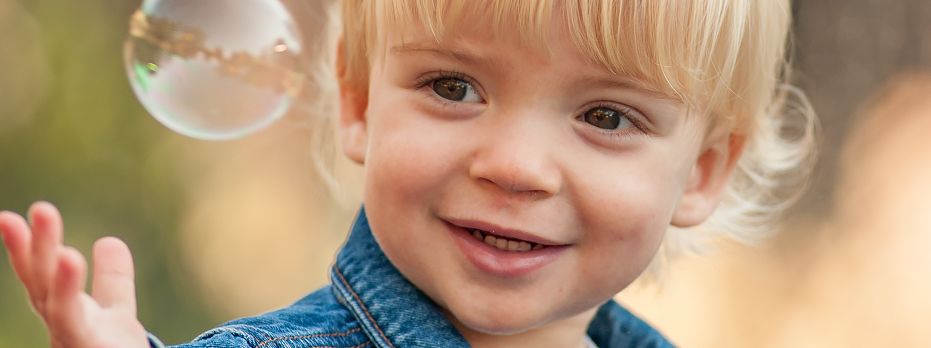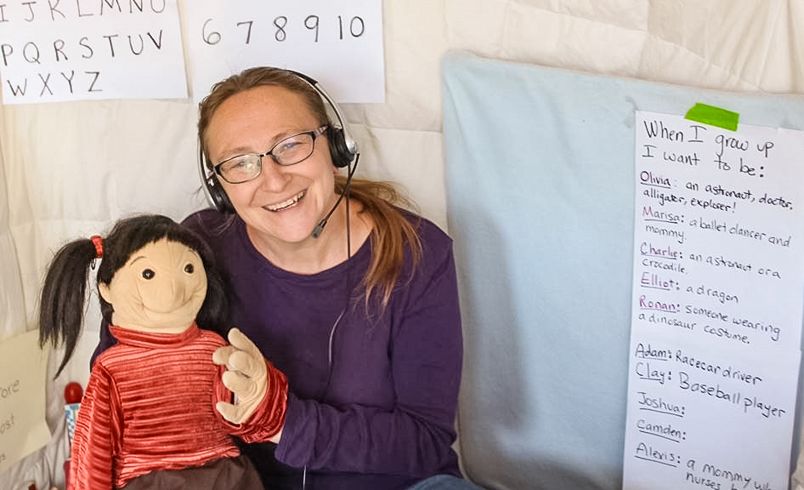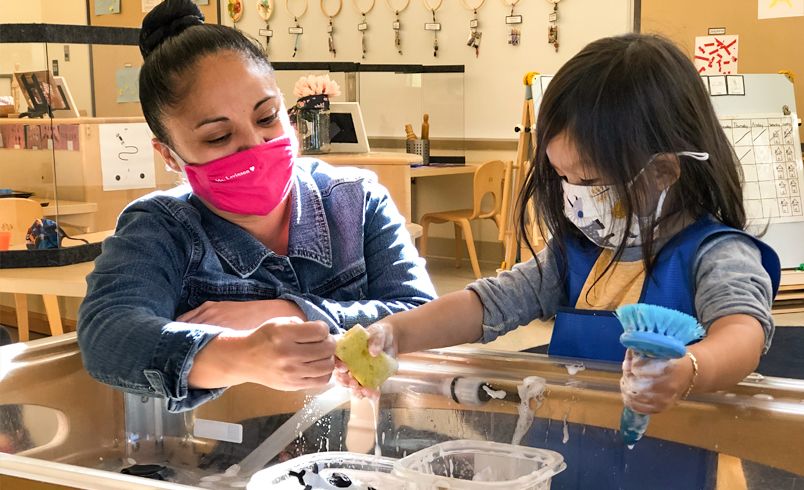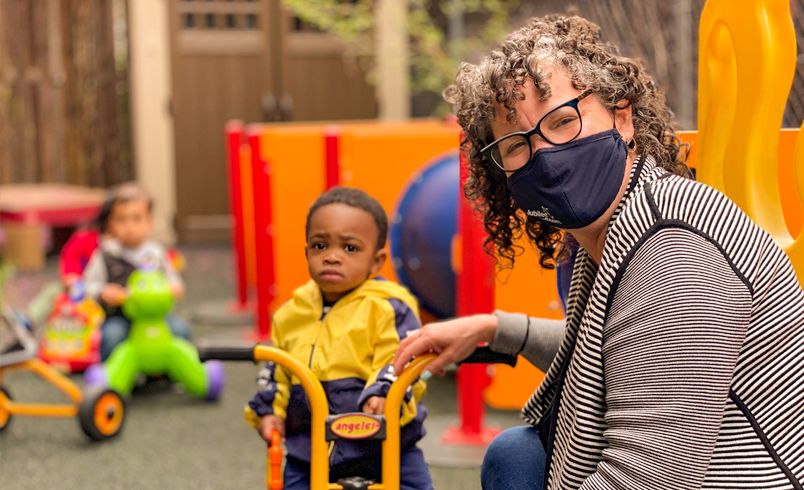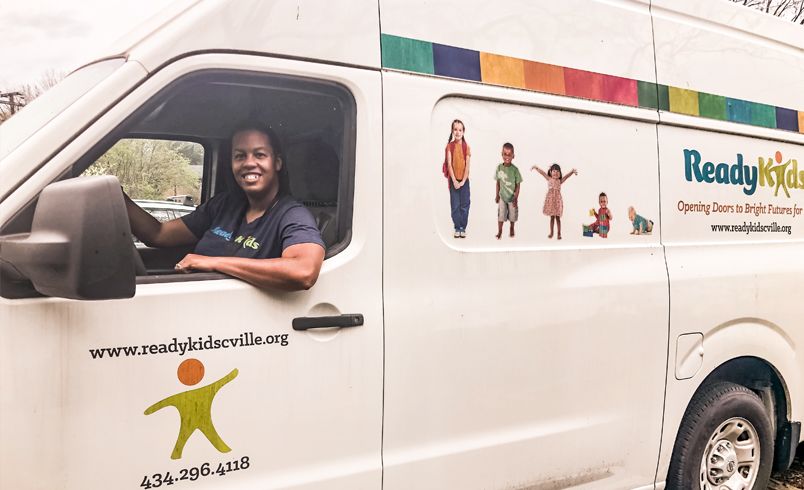Is There a New Normal?
What Does it Look Like in Your Setting?
| May 2021Recently, I reached out to a group of front-line staff and directors to find out what they were doing, or planning to do, to involve families as programs transition to new ways of doing things as a result of COVID-19. Early childhood educators tend to be creative and resilient, willing to face new challenges with open-mindedness. They soon got used to additional sanitizing measures and seeing children in masks, while of course wearing their own masks too. Here are some of their stories about adjusting to a new normal for their program’s operations.
Julia Luckenbill shares her experiences teaching toddlers and preschoolers, and engaging families online.
Jenny Levinson reminds us of the importance of maintaining consistent routines.
DeeDee Parker Wright tells how her program focused on new ways to connect with families.
Shannon Banks explains how the epidemic led to innovations in how the program delivers services to children and families.
I Never Thought I’d Be Mr. Rogers
Julia Luckenbill, M.A. Edu.
Virtual Programming Coordinator/Demonstration Lecturer
University of California, Davis
It’s been six months now as a virtual preschool and toddler room teacher, and quite the journey. For the last twenty two years in various preschool settings (a parent cooperative, a private preschool and two laboratory schools), I’ve been hands-on in the sand and the water and the paint, changing diapers, admiring earthworms, and locating lost rain boots.
My work at the Center for Child and Family Studies Laboratory School for the last fourteen years also involved face-to-face coaching of undergraduates in their work with children. I also worked supporting the children and families in the practicum classroom, and engaging in outreach to our community.
All of this changed abruptly in March 2020, when we finished our final day in the classroom, closed the door, and learned that there would be no children or undergraduates in the classroom in Spring Quarter 2020.
I had assumed that this closure would be brief, but it soon became very clear that the following academic year I would be teaching in the virtual classroom, both with undergraduates and enrolled toddlers and preschoolers. I would also be engaging in outreach virtually. I had little experience teaching online in any format.
I spent the summer developing lesson plans for the children and undergraduates, watching virtual children’s programming and trying to envision what being a virtual teacher meant. I decided the best way to be a developmentally appropriate teacher was to find ways for everyone to learn in a hands-on manner through experiences designed to support creative thought, and connection to their own interests and goals.
I have a feeling most people can envision an undergraduate course online. An online class designed for toddlers and preschoolers is harder to imagine.
So what does it look like? This year my children’s classroom is a small desk and a chair, a laptop opposite me. I’ve got a felt board, a chair for my puppet, and many kits and props beside me. I’ve worked hard to bring elements to the children’s virtual classroom that are parallel to the physical one: songs, stories, puppetry, dancing, art, dictation, dramatic play, ecology, exploration of loose parts, trying healthy foods, learning about occupations and the community, and, of course, show and tell.
When I find myself at a loss, I often ask myself, “What would Mr. Rogers do?” This coping tool permits me to think outside of the moment and reflect about a model of excellence. Often the answer is right there. Ritual, compassion, patience, listening more to unmet needs, giving time to grow, singing, and feeding our pet fish.
Is this working? We’ve received wonderful reviews from families, sharing how happy their children are to join the program, how well their bilingual children are developing English while also feeling their home language is welcome, how excited children are to try out activities like making lemonade and growing fava beans, and how families are learning so much from the embedded resources included in their weekly newsletter.
I’ve been lucky that the families are so engaged, often joining their children in the activities and sharing songs and recipes from their homes. We’ve had presentations about Dia De Los Muertos and Lunar New Year, and how it feels to fly on an airplane and land in an airport or be a doctor. We’ve enjoyed seeing one child’s mother’s pregnancy, and then met the new baby, and we’ve enjoyed learning more about how to care for babies. We’ve learned to sing “Hot Potato” in Portuguese and “5 Little Monkeys” in Spanish. The families’ openness and willingness to jump in makes the class time so much more valuable for us all.
I think it’s likely that next year I’ll find myself in a Zoom classroom again. I know now that I can create a developmentally appropriate learning experience including emergent curriculum for my young learners. I can build a community of learning online, just as Mr. Rogers did for me many years ago.
Today Zoom permits me to do things that he could not. There is the added benefit of being able to have conversations with my small learners, sing the songs they request, and design prop kits that they can use to play along.
We can make high quality virtual learning for young children, just as we can do it for undergraduates. It’s not the same as admiring a puddle together and then jumping in it. It’s not the same as hiding in anticipation of twelve toddlers discovering your prime hide and seek location in a fit of laughter. But it is possible, and it is essential work as we support the children and their families through this challenging time.
Incorporating Consistent Routines
Jenny Levinson
Preschool Teacher
Wintonbury Early Childhood Magnet School
Bloomfield Public Schools, Connecticut
As early childhood educators, we know that young children feel safe with predictable and consistent routines. In fact, I feel the same way. But Covid-19 brought uncertainty to the classroom. As schools reopened, I experienced quickly that a positive case could cause the class to go into quarantine and transition to remote learning without any warning. The first time this happened to my class, I felt devastated. However, I learned the importance of remaining constant and building a consistent learning routine for families and children whether in or out of school. I learned the importance of reaching out to families, listening to them and sharing weekly schedules with them to make learning transitions smoother. Providing options for families and helping them engage their child in learning were also ways I learned to connect individually with families. There are still uncertain days ahead, but even one small consistent routine can help us all feel safer as we go through this together.
Forging New Connections on the Road to the New Normal
DeeDee Parker Wright, Executive Director
Jubilee JumpStart
Washington, DC
At Jubilee JumpStart, an early childhood education program serving children ages birth to five and their families in Washington DC, we have used “4Cs” to guide our planning and decision-making since the day we temporarily closed the center due to the coronavirus pandemic in mid-March, 2020. The 4Cs are filters that emphasize Calm, Care, Connection, and Commitment. When we assess needs, ideas, challenges, and the future, we ask: What keeps us connected with families? How can we show the most care possible? Are we calm as we make this decision? Will this demonstrate our commitment to serving families while keeping our children and staff safe and healthy?
While this framework supported us effectively throughout our closure, the 4Cs also proved effective as we developed our roadmap to re-open our center in July, 2020. Further, as we have operated within the most Covid-safe environment possible, we continue to ask the same questions when updating policies and procedures, especially when the CDC or city guidelines change or our center experiences a positive Covid case among children or staff. So it makes sense that we will rely on the same 4Cs as we consider changes and move towards the “new normal,” in addition to one of the core strengths of our program—engagement and partnership with families.
Among the 4Cs, connection emerges as the most important tool when making changes. We have relied on (and strengthened) our relationships with parents throughout the pandemic. Our commitment to safe, healthy, quality care will be demonstrated by making deliberate, informed and engaged decisions about discontinuing any Covid-specific policies or procedures, exactly as was done during closure and return. We developed several new methods of enhanced connection in adjusting to the limitations placed on our previous practices, many of which will continue into the “new normal.”
Adjustments to connections included:
- A new website. This greatly improved our ability to share pressing center announcements, resources, and access to information and documents.
- A private Facebook group.The group allows for sharing updates, activities, and information among parents and staff. During our closure, teachers posted learning resources and book readings that could be viewed any time on the Facebook group, providing support for parents caring for children at home. It also encouraged connection and communication among everyone in our center community. The Facebook group continues to serve that purpose while parents cannot gather inside the classroom.
- Virtual parent meetings and orientations. These have been well-attended and effective in providing information and opportunities to connect. Including a virtual option even when the events can happen in person will allow greater access and may work better for families’ schedules.
- Virtual parent-teacher conferences and home visits.Much like in-person meetings, these opportunities for parents and teachers to deeply discuss a child’s development and anything of interest or concern have been well-attended and successful. Continuing to offer this option meets a family’s need for flexibility and allows for greater engagement.
- Return to (New) Normal Committee. Several parents on our Re-Opening Committee, along with staff, ensured we were considering the perspectives, needs and visions of families and teachers. The same opportunity will be offered to all parents and staff as we shift further into intentional Return to (New) Normal planning throughout Spring and Summer of 2021. Our Return to (New) Normal Committee will review health guidelines and licensing requirements, former and current center practices, and parent and staff perspectives. Specific areas will include:
- Operations—hours, check in procedures, group sizes, staffing, exclusion policy
- Education Services—external assessments, partnerships, volunteers,
- Family Programming—parent access inside center, family events, parent groups
We are confident that our ongoing open and transparent communication with families will support a positive and successful transition into the “new normal.” By intentionally seeking input, listening and responding to concerns, sharing timely updates, and sharing our vision for safe, high quality care, Jubilee JumpStart’s powerful partnership with parents will continue and help us flourish as a community.
For Jubilee JumpStart and our families, 2020 was a year focused on response, shutdown, and re-opening. 2021 promises to be a year focused on developing a safe and strong blend of old and new normal. We think of it as responsiveness and development, two concepts any early childhood educator knows plenty about. Jubilee JumpStart and other child care providers are built to work with families for children in ways that meet their daily needs and create a limitless future, no matter the unusual set of challenges. A pandemic is no match for our creativity and commitment, especially in partnership between providers and parents. We will reach a New Normal together, as connected as we’ve been all along the way.
Our Plan = An Enhanced Version of Our Effective Practices
Shannon Banks, Director of Community Education
ReadyKids
Charlottesville, VA
Building, strengthening, and maintaining collaborative relationships with families is a key pillar of the ReadySteps Program in Charlottesville, VA. The staff of our family-focused program bring two vans with developmentally appropriate toys and materials to community centers across town. Families with children up to age 5 attend the two-hour play sessions. Our vans are staffed by educators who engage children in learning experiences and support families.
As we work to transition to the new normal, we will continue to be open, honest, and transparent with participating families. This includes asking and answering questions, acknowledging and validating feelings, and explaining changes that are being made along with the “why” behind the decision.
Our families are diverse, and so are their lives. We must all work together to figure out what is best for ourselves, our families, and the children. Being open to having conversations and invested in listening is a key piece of our programming. We solicit feedback on our program on a regular basis, both formally and informally and that has continued throughout the pandemic. As we strive to be an adaptable and responsive program we use participant feedback to help shape current and future programming. All staff genuinely want to know how what we are doing is impacting those with whom we work. What are we doing successfully? Where are the opportunities for growth?
We have learned a lot through virtual programming during the pandemic! Prior to the pandemic, virtual programming was not a part of our program, and our use of technology to both deliver programming and connect with current and prospective participant families was nowhere near as integrated into the program as it had to be during the pandemic.
This past year gave us the opportunity to innovate ReadySteps in a new way. We did not just innovate within the current structure, we had to create an entirely new structure. This included:
- moving from an open drop-in style of programming to one that required pre-registration with a cap on the number of families able to participate;
- transitioning from a program that ran for an entire school year to one that ran for multiple shorter 12 week sessions;
- curating and delivering materials kits for each participating family; and
- shining a new light on how the program reaches participants.
We recognize the silver linings that resulted from our virtual programming including increased participant engagement, deeper connections, and the ability to reach families in the farther corners of our service area. We also recognize that none of this would have been possible without the investments we made in connecting with participating families, seeking out their feedback, and also reflecting on what was happening during programming. As we move into our new “post pandemic normal” and make plans to return to in person programing, we are very interested in exploring how to maintain a virtual programming component that may make ReadySteps more accessible to families unable to come to in person programming, and how to better utilize electronic communication to complement the work of the program.

